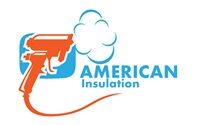Understanding the Importance of Home Insulation
Insulating your home is of utmost importance for several reasons. Firstly, proper insulation helps to maintain a comfortable living environment by regulating the temperature inside the house. During the scorching summer months, insulation keeps the heat out, ensuring that the interior stays cool. Conversely, in winter, insulation traps the warmth inside, preventing cold drafts from entering. As a result, you can enjoy a cozy and comfortable atmosphere all year round.
Apart from enhancing comfort, home insulation also plays a crucial role in energy efficiency. A well-insulated house requires less energy for heating and cooling, leading to significant cost savings on utility bills. By creating a barrier between the interior and exterior, insulation helps to prevent the escape of conditioned air. This means that you won’t have to rely as heavily on your heating or cooling systems, reducing your carbon footprint and contributing to a more sustainable environment. Understanding these benefits highlights the significance of home insulation and why it should be a top priority for homeowners.
Factors to Consider When Selecting Home Insulation
Factors to Consider When Selecting Home Insulation
When it comes to selecting home insulation, there are several crucial factors that homeowners should consider. First and foremost, it is important to assess the climate in which the home is located. Different insulation materials have varying levels of effectiveness in different climates. For example, in areas with hot summers and cold winters, insulation with a higher R-value may be necessary to maintain comfortable indoor temperatures year-round. On the other hand, in more moderate climates, homeowners may have more flexibility in choosing insulation materials with lower R-values. Considering the climate can help homeowners determine the optimal type and thickness of insulation for their specific needs.
Another factor to consider is the cost-effectiveness of different insulation options. While some insulation materials may be more expensive upfront, they may offer long-term energy savings that offset the initial investment. Homeowners should consider the insulation’s potential to reduce heating and cooling costs over time when making their selection. Additionally, it is important to evaluate the lifespan of the insulation. Some materials may require regular maintenance or replacement sooner than others, which can impact the overall cost-effectiveness. By carefully assessing the upfront cost, potential energy savings, and lifespan of different insulation materials, homeowners can make an informed decision that aligns with their budget and long-term goals.

Different Types of Home Insulation and Their Pros and Cons
When it comes to home insulation, there are various types to choose from, each with its own set of pros and cons. One popular option is fiberglass insulation, which is made from tiny glass fibers. This type of insulation is known for its affordability and effectiveness in reducing heat transfer. However, fiberglass can be irritating to the skin and lungs if not handled properly, so it’s important to take necessary precautions during installation.
Another commonly used insulation material is cellulose. Made from recycled paper products, cellulose insulation is eco-friendly and provides excellent thermal performance. It also has good soundproofing properties. However, one drawback of cellulose insulation is that it can be a fire hazard if not properly treated with fire-retardant chemicals. It’s crucial to ensure proper installation and compliance with safety regulations to prevent any potential risks.
Overall, the choice of insulation material depends on factors such as budget, climate, and specific needs. Taking the time to research and consult with professionals can help homeowners make an informed decision about which type of insulation will best suit their home and provide the desired benefits. Ultimately, proper insulation plays a vital role in improving energy efficiency, reducing utility costs, and enhancing overall comfort within the home.
Assessing Your Home’s Insulation Needs
When it comes to assessing your home’s insulation needs, it is essential to consider various factors. One of the primary factors to consider is the climate in which you reside. Homes located in colder regions will require more insulation to ensure adequate heat retention and energy efficiency. Additionally, the age and construction of your home should also be taken into account. Older homes may have insufficient or outdated insulation, making it necessary to upgrade to more effective and modern materials. Furthermore, it is crucial to assess areas of potential air leakage, such as windows, doors, and attics, as addressing these areas can significantly improve the overall insulation of your home.
Once you have considered the climate and construction of your home, it is recommended to conduct an energy audit. Hiring a certified professional to perform an energy audit can help identify specific areas where your home may be losing heat or energy. This audit often includes a thorough examination of the insulation in various parts of your home, such as walls, floors, and ceilings. By understanding the specific insulation needs of your home, you can make informed decisions about the type of insulation material and installation technique that would be most suitable. Assessing your home’s insulation needs is a critical step in creating a comfortable and energy-efficient living environment.
How to Calculate the Required R-Value for Your Home
When it comes to ensuring your home is energy efficient, calculating the required R-value for your home is crucial. The R-value is a measure of an insulation material’s resistance to heat flow. In other words, it determines how well the insulation can prevent heat from entering or escaping your home. By calculating the required R-value, you can determine the optimal insulation thickness and type for different areas of your home. This will not only help you maximize energy efficiency but also reduce your heating and cooling costs.
To calculate the required R-value for your home, you need to take into account several factors. First, consider the climate zone you live in. Different regions have different recommended R-values due to variations in weather conditions. Second, consider the specific areas of your home that require insulation, such as the walls, attic, or basement. Each area may have different insulation requirements based on factors like the construction materials used. Additionally, consider any local building codes or regulations that may dictate the minimum R-value for certain areas of your home. By considering these factors, you can accurately calculate the required R-value specific to your home’s insulation needs.
